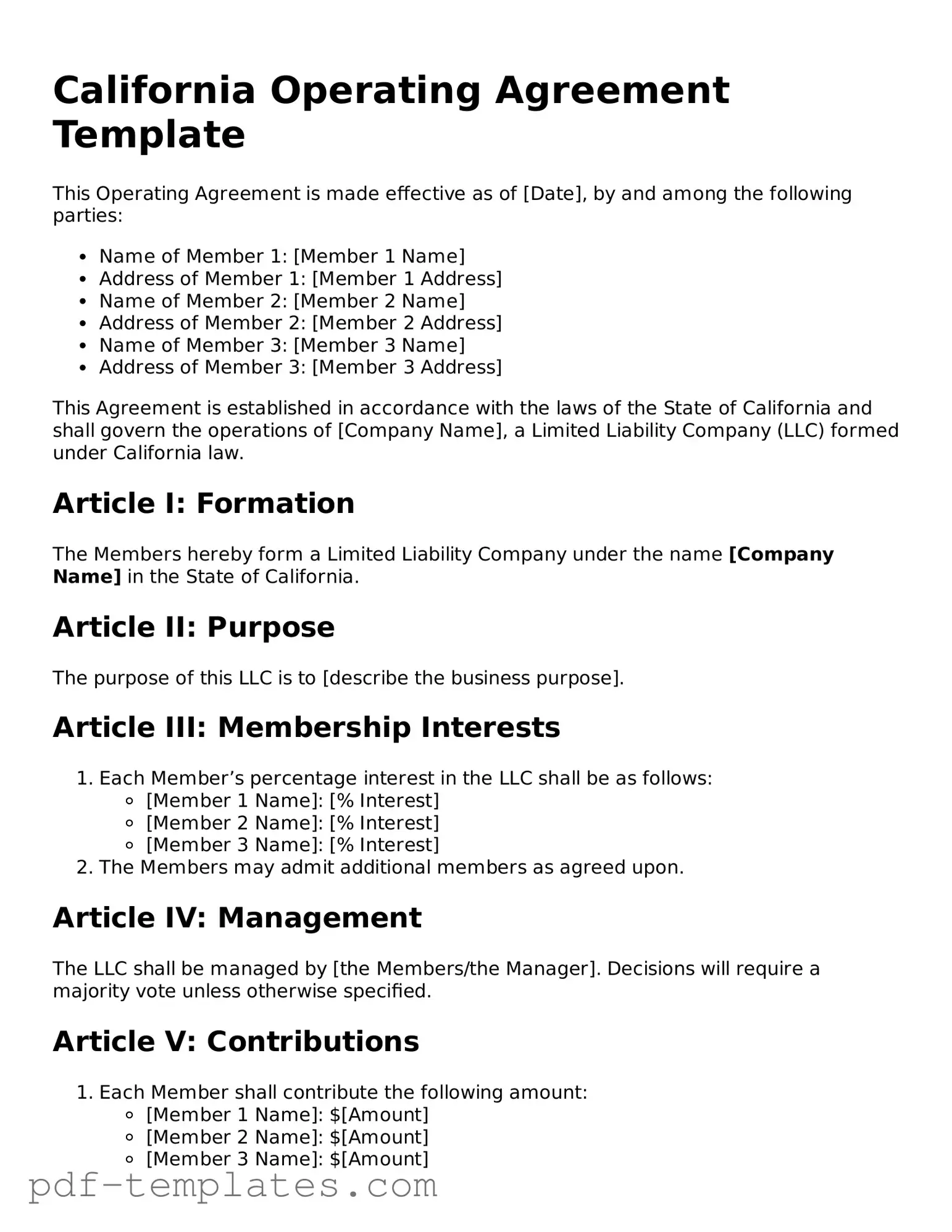The California Operating Agreement is similar to a Partnership Agreement, which outlines the roles, responsibilities, and profit-sharing arrangements among partners in a business. Like the Operating Agreement, a Partnership Agreement serves as a foundational document that governs the internal operations of the partnership. Both documents aim to clarify expectations and protect the interests of the parties involved. They detail how decisions are made, how profits and losses are distributed, and the procedures for adding or removing partners, ensuring smooth operations and minimizing disputes.
For those looking to establish an agreement for room rentals, a thorough understanding of the detailed Texas Room Rental Agreement form is beneficial. This form clarifies the expectations and responsibilities of both the landlord and tenant, ensuring that all terms of the rental arrangement are well-defined from the outset.
Another document that shares similarities with the California Operating Agreement is the Bylaws of a corporation. Bylaws establish the rules for managing a corporation, including the roles of directors and officers, meeting protocols, and voting procedures. Just as an Operating Agreement governs the structure and operations of a limited liability company (LLC), Bylaws provide a framework for corporate governance. Both documents serve to protect the rights of members or shareholders and promote transparency in decision-making processes.
The Shareholder Agreement is also akin to the California Operating Agreement. This document is designed for corporations and outlines the rights and obligations of shareholders. It covers aspects such as share transfers, voting rights, and dispute resolution. Similar to an Operating Agreement, a Shareholder Agreement aims to prevent misunderstandings among shareholders and provide a clear roadmap for handling various situations that may arise during the life of the corporation. Both documents are essential for maintaining order and clarity in business relationships.
Lastly, the Membership Agreement resembles the California Operating Agreement in its purpose and structure. A Membership Agreement is often used by organizations that have members rather than owners, such as non-profits or cooperatives. It details the rights and responsibilities of members, how decisions are made, and the processes for admitting new members or removing existing ones. Like the Operating Agreement, this document seeks to establish a clear understanding among all parties involved, ensuring that everyone is on the same page regarding their roles and contributions.
